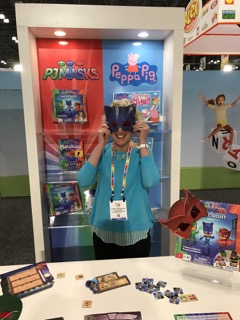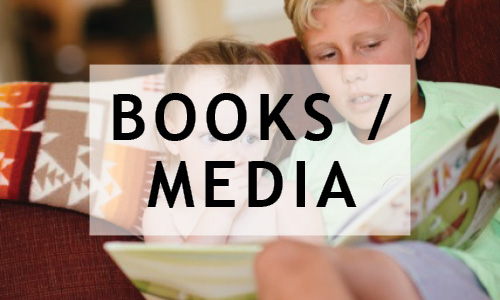 As I walk through the aisles of the New York Toy Fair, I get hit with the amazing ingenuity of toy designers. This year it was evident that there are still new ways to build a child’s memory, vocabulary, concepts and listening skills through fun preschool play. Here were some of my favorites:
As I walk through the aisles of the New York Toy Fair, I get hit with the amazing ingenuity of toy designers. This year it was evident that there are still new ways to build a child’s memory, vocabulary, concepts and listening skills through fun preschool play. Here were some of my favorites:
- Peaceable Kingdom’s “Blue Plate Scramble” is a new cooperative game designed around a popular real-life and play theme, ordering at a restaurant. Players have to remember which foods go together (building association skills) on a plate ordered at the Blue Plate Diner. Don’t get them wrong or you have an angry customer! Peaceable Kingdom’s games were always favorites in my speech therapy sessions as kids have to work together to win, building social skills too.
- Mindware’s “E-I-E-I-GO” is another combination of pretend play that matches kids’ interests as a preschooler. Shake the silo to see what animal the players must match. They roll their dice until they get 3 matches and make the animal’s sound to win a token. Active play is fun play!
- Janod’s “Happy Tree” by Alex Brands is a new take on a memory game. Kids have to remember sequentially the sections of a tree and what animals are hanging out on each branch, building memory, sequencing, positioning vocabulary, and pre-literacy skills.
- “PJ Masks Night Sight Game” by Wonder Forge is a creative memory, role-play game as kids wear masks of their favorite characters to be able to secretly “read’ the toy tiles they have placed on their toy shelves. Take off the masks, turn over Romeo tiles and try to match them to the correct row of toys. Put masks back on to see if you win the tiles or Romeo steals them. The role-play and cooperative nature of this game makes it a winner for teaching social skills and language.
- Spinmaster’s “Soggy Doggy,” game where players race around the board washing the doggy (spraying him in the shower) until he decides to shake himself dry–sending you back to start–generates a lot of wet laughs, while kids learn first game play and following directions.
Speech therapists can use these games to strengthen the skills I’ve mentioned or adapt them to be a reinforcement for other speech and language goals. Let me know how you have incorporated these games in your therapy session so we can all learn.



